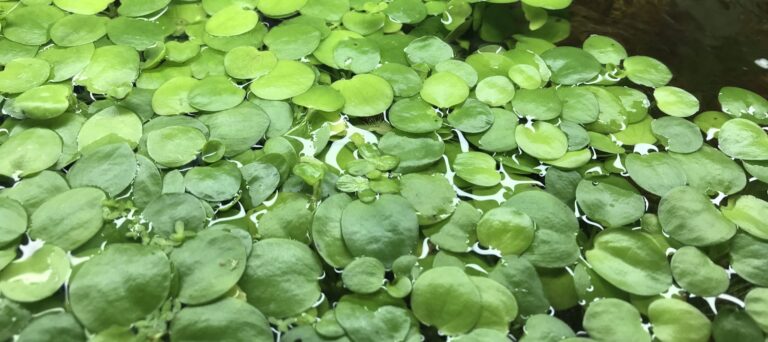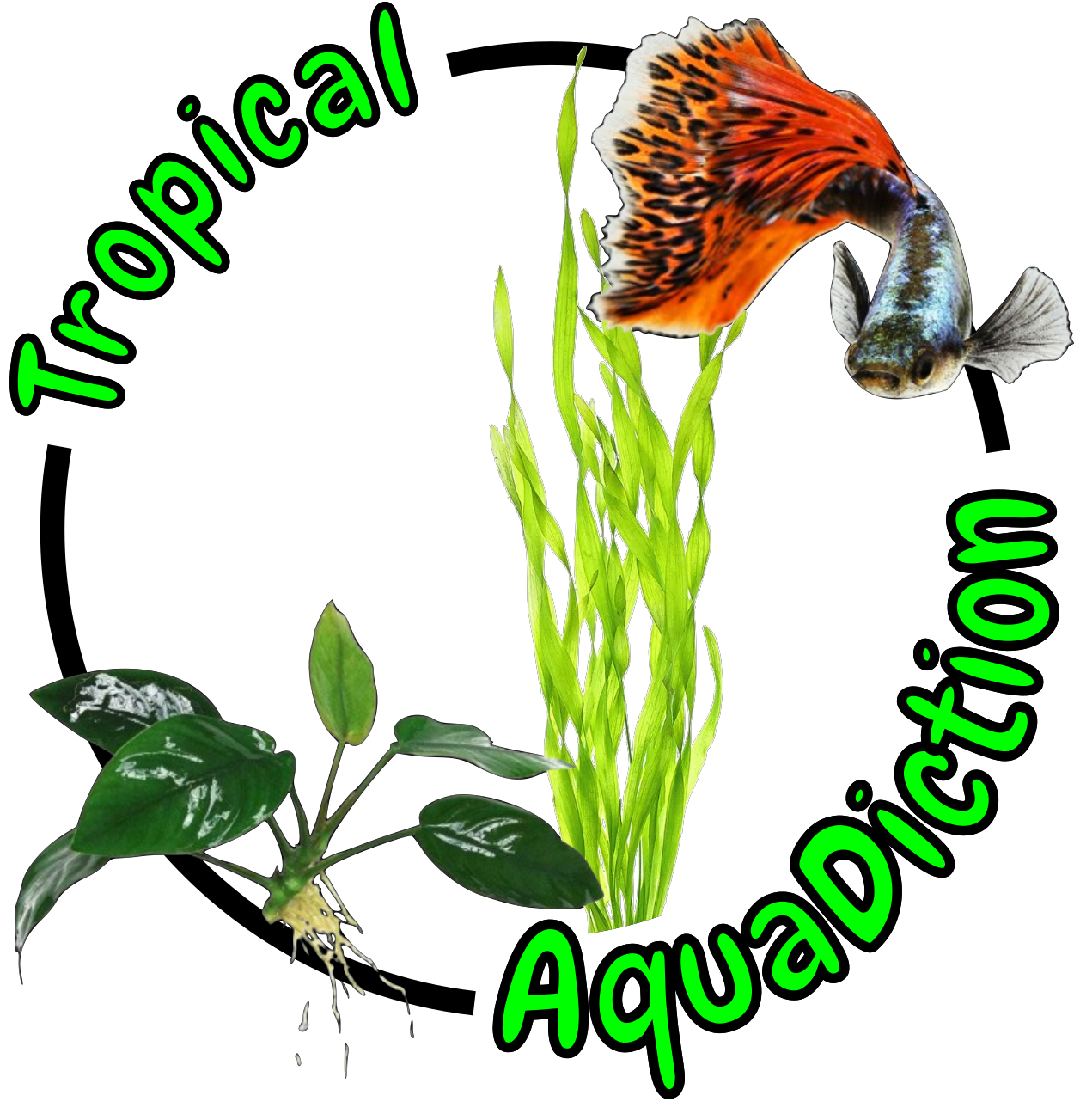C
ommon Name(s): Amazon Frogbit, smooth frogbit, frog’s bit, frog-bit, frog bit, West Indian sponge plant, South American sponge plant, sponge plant, and spongeplant
Amazon Frogbit (Limnobium laevigatum), is an extremely hardy and durable, easy-care, free-floating aquatic plant that is popular for freshwater aquariums and ponds. Great for both beginner and expert aquarists with low-tech tanks. Excellent for denitrification and improving water quality. Typically, frogbit is fast-growing and easy to propagate. Frogbit is adaptable and can acclimate to a wide range of water conditions.
Indigenous to the Amazon and Orinoco basins of South America and Central America. It is one of several plants commonly mistaken for “water hyacinth”.
BENEFITS
- Easy-care: requires little maintenance and CO2 injection unnecessary.
- Easy to propagate: Rosettes grow runners (stolon’s), which develop into new plants. Even a single, healthy leaf may develop roots and grow a new plant.
- Attractive: eye-catching colors and textures add character to your aquarium or water feature.
- Protection: can provide shade and refuge for fish and fry.
- Oxygen: oxygenates water and removes excess nutrients
PLANT TYPE: Floating, aquatic plant.
IDENTIFICATION:
Emerald-green leaves provide a magnificent
limnobium spongia vs Limnobium laevigatum
CARE GUIDELINES:
PROPAGATION METHODS:
- Cutting, through separating whole leaf segments from the root base.
- Sexually, through flower pollination and seed production. Seeds germinate in about a week and should be sown on the surface of the water in shallow containers, and then transferred to larger containers, or when they have developed one set of leaves, they may be planted on water surfaces as a floating plant.
- Vegetatively, through fragmentation of stolon and leaf segments. The most common method, where floating rosettes produce runners (stolon’s), which can break off and grow into new plants.
- Division, through dividing each of the pod clumps from the stems that lead to the stolon’s.
GROWTH: Fast-growing under ideal conditions; slow-growing when conditions are less than optimal
- Placement: Water surface to grow as a floating plant in slow moving waters.
- Planting: Frogbit is a versatile plant, as it can be grown as either a floating plant, or you may plant its roots into the substrate and it can grow from the bottom of the tank or natural mud-bottom pond.
- The floating pods provide a natural cover to protect fish from the sun and predators. When grown as a floating plant, the trailing roots may provide shelter for fry and shrimp.
- Observe the roots: shorter, bushy roots are healthy roots as they are getting enough nutrients near the plant. Longer, trailing roots are extending out to locate a source of nutrients.
- Fertilizing Needs: Does not normally require additional aquatic plant fertilizers. But they might help this plant to flourish in aquariums with no natural nutrients in the water.
- The leaves of the plants should lay prostrate on the surface of the water. If the leaves begin to curl downward, this is typically a sign of overcrowding.
PESTS AND DISEASES: None serious.
- Some aquatic snail species enjoy the soft, spongy underside of the leaves. You can reduce this issue by keeping the plants away from the sides of the tank and more toward the middle.
DISADVANTAGES
- The most notable disadvantage is, if left unmanaged, frogbit can quickly overrun 100% of the water surface of an aquarium or pond, reducing gas-exchange and preventing light from reaching beneath, which hinders or stops photosynthesis from occurring in the plants beneath.
- Additionally, overcrowding can lead to unhealthy plants, decaying and moldy plant matter, which in turn increases ammonia and surplus nutrients.
- Intense nutrient uptake from the water column can starve all other plants.
- Water droplets on top of leaves can cause the leaves and plants to rot. Keep the tops of the leaves dry and away from filters or fast waters.
DISPOSAL:
The larger leaves and plant pods of Frogbit make this an easy plant to manage and remove the excess growth.
As with any aquatic plants and livestock, proper disposal is important to ensure the longevity of our aquatic hobby, the freedoms we enjoy in either selling or exchanging our plants with others, and to protect our local waterways and environment. Please dispose of aquatic plants, plant matter, and livestock in some of the following methods:
- Dried aquatic plants can make good fertilizer by adding directly to the soil or to compost.
- Most chickens and rabbits will enthusiastically devour most types of aquatic plants and can benefit from consuming healthy, live, or dried aquatic plants. Some common aquatic plants and livestock that are grown specifically to use as feed include: duckweed (both common and giant), Frogbit, Water lettuce, Dwarf water lettuce, algae, and many varieties of snails (for chickens). Before using any aquatic plants as feed, please research that specific plant and see if it is safe to use as feed. Example: Dried leaves and stems from water hyacinth can be used as feed, but the bulbs are toxic. * https://www.researchgate.net/publication/292981455_EFFECT_OF_FEEDING_DIFFERENT_LEVELS_OF_WATER_HYACINTH_ON_PERFORMANCE_OF_GROWING_RABBITS.
- Use very fine mesh screens or sponges to strain your wastewater through when doing water changes or when disposing of plants. Many aquatic plants can propagate through even small segments of the plant. So please be diligent when disposing of wastewater.
- You can either sell or exchange your excess plants. I do both. I frequently exchanged my aquatic plants with my neighbor for chicken eggs, when his chickens are producing.
PLEASE DO NOT dispose of aquatic plants and livestock by dumping them down your toilet or sink drains. Nor in rivers, streams, or open waters. Please use proper methods and precautions. Thank you!!!
Additionally, I’ve read it is recommended that aquatic plants grown in a standard home aquarium should not be used for human consumption. I’d have to look into that more to see how that differs from a aquaponic system. I have some good ideas why, though.
Source information collected from:
- https://plants.sc.egov.usda.gov/home/plantProfile?symbol=LILA
- https://en.wikipedia.org/wiki/Limnobium_laevigatum
- https://petfish101.com/amazon-frogbit/
$10 / 12+ plants. You’ll receive 12+ fully rooted, live plants (rosettes) with approx 3+ leaves per portion that are floating in water in a sealed plastic transport bag. (Photo’a are a sample representation and may not be the actual plants you will receive.)
*** Source aquariums may contain common duckweed and both ramshorn and assassin snails. I’ve done my best to removed much of the duckweed for about two weeks, I haven’t seen any new growth…yet. If you prefer no snails for a balanced ecosystem, you may treat for snails using an alum powder and water solution; Watch this video by “Girl Talks Fish” from Aquarium Co-Op for instructions: https://youtu.be/DpFCOFbxrWA.***
Free local pick-up in Logan, UT
Limnobium laevigatum

Hierarchy: Binomial Nomenclature
Domain: Eukaryota
Kingdom: Plantae – plants
Subkingdom: Tracheobionta – Vascular plants
Phylum: Spermatophyta – Seed plants
Subphylum: Angiospermae – Flowering plants
Class: Liliopsida – Monocotyledonae
Family: Haloragidaceae (watermilfoil family)
Genus: Limnobium Rich. – spongeplantP
Species: Limnobium laevigatum – West Indian Sponge plant
Botanical / Scientific Name: Limnobium laevigatum (L.) Sw.
